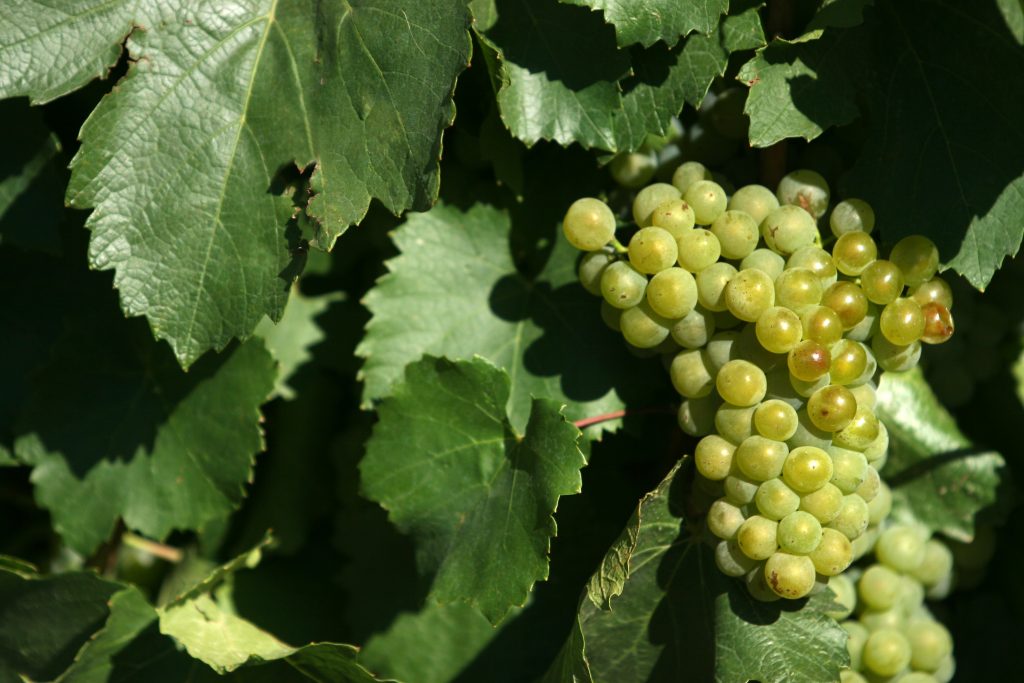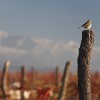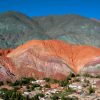“Argentina must tell the world more about its Chardonnay,” British expert Jancis Robinson said during the Argentina Wine Awards. A phrase that surprised her foreign counterparts, but not the locals. And not out of pride, but because Chardonnay is a favourite among Argentines. We are not only famous for our Malbec and big reds!
However, Robinson’s phrase is more than accurate. In recent years, Argentine whites, particularly Chardonnay, have benefited from the emergence of new terroirs with cooler climates and a different style of vineyard management, for example, earlier harvests. In other words, they´ve been reinvented.
In this sense, the Uco Valley has been the hinge in the history of this strain, where until recently the Napa Valley style of Chardonnay with its creamy taste and aroma of hazelnuts was the more sought after.
Today the search is on for austere and delicate wines. But the answer is not only in high altitude vineyards. Traditional regions of Mendoza and Patagonia or other emerging ones have great potential and each one offers its own style.
Uco Valley, the historic break
Consecrated by the style of its reds and the diversity of Malbec, the Uco Valley has a lot to thank the white varieties for. In particular, Chardonnay. Its high elevation vineyards, blessed by dry, cold weather, has seduced many producers into improving the quality of this base for sparkling wines. Immediately they found that the quality they got deserved to be bottled. So, Tupungato and Tunuyán, the highest departments of the valley, opened the doors to a new local style of Chardonnay. “The height of the Valle de Uco ensures the cold weather needed to achieve Chardonnay with citrus and floral aromas and super fresh flavours” says José Galante, winemaker at Bodega Salentein, considered one of the experts of this varietal in our country and a witness to its evolution.
Galante agrees with all his colleagues. The key was understanding that height helps to balance the climate and at the same time working with the relative humidity that this strain demands. “At lower altitudes, the weather is warmer and drier. Today various strains are grown up to 1,600m and the conditions are optimal. At harvest time, the maximum temperature does not exceed 28 degrees. This ensures good natural acidity and good maturity without the plant getting exhausted. “
And the words of this winemaker can be put to the test on a multitude of labels that come mainly from the vineyards of Gualtallary, Los Arboles and San Pablo, micro-regions where Chardonnay develops its full potential. Some excellent examples are Salentein Pr1mus, Escorihuela Gascón Pequeñas Producciones, Domaine Bousquet Grande Reserve, Lagrima Canela from Walter Bressia and the classics Trapiche Medalla and Angelica Zapata Alta, the latter being the foundation stone of the new style.
The Chardonnay of yesterday, today and tomorrow
Lujan de Cuyo is the birthplace of great Chardonnay. In fact, the grapes used for many traditional labels are grown in this region. These vineyards, at an average altitude of 940m, enjoy good sunshine, a moderate to cool climate and a dry habitat. Its alluvial soils also feature a strong presence of clay and silt, which produces well structured, voluminous wines. The temperature, a few degrees above the highest terroirs gives tropical aromas, with mature fruits.
According to Luis Barraud, winemaker of Viña Cobos and head of the Bramare Chardonnay Marchiori Vineyard, “Lujan de Cuyo has the most classic style of Argentine Chardonnay, fat and broad with deep aromas, wines with multiple vintages.” However, Barraud does not deny the pursuit of freshness that defines the current Chardonnay and, for this reason, he adds: “In the last few years, we have changed the management in our Perdriel vineyard. Today we intervene less in order not to accelerate the maturity, and we even harvest early. ”
Viña Cobos, like their neighbouring wineries are today achieving elegant Chardonnays but with more tension and acidity, making them easy to drink. Among the flagship examples of Lujan de Cuyo, we must mention Finca Los Nobles from Luigi Bosca, made with grapes from a very old vineyard in Vistalba, close to where Fabre Montmayou grow grapes for their Reserva range. Another must in the area .
Southern Mendoza, more precisely San Rafael, is another bastion of Chardonnay. There, the cool climate and low altitude vineyards provide a perfect environment for cultivation, where the style has always been classic, with good structure and a fruity flavour. Today, somewhat fresher, due to higher acidity, they are still enjoyed among Argentines. The labels that best express the Sanrrafaelino terroir are Famiglia Bianchi, Alfredo Roca Fincas and Goyenechea.
Patagonia, the most unlikely candidate
While the focus of Patagonian wineries is on reds like Malbec and Pinot Noir, the prestige of their Chardonnays is growing daily. “In Patagonia, we must make the most of what each province offers,” says Marcelo Miras, winemaker at Bodega del Fin del Mundo and advisor to other projects in the region.
According to the expert, in each province climate and soil profiles define two Patagonian Chardonnays. “In Neuquén, they are lively and light, ideal for drinking young, while in Rio Negro they are broad and complex, with ageing potential and barrel fermentation.” However, in both provinces the varietal tipicity and fresh flavours are a common factor. To understand the character of Neuquén, you must search for Saurus Select from Familia Schroeder, Mantra de Secreto, Patagonia or Bodega del Fin del Mundo Reserva or Bodega Patritti. As for Rionegrinos, Bodega Aniello, in its 006 line, has a modern and sophisticated version, while Miras offers one fermented in oak with an old world style.
Waves and Chardonnay
Conquering the Atlantic coast is the new goal of Argentina´s wine industry. It is a well known fact that near the sea whites are quick to give good results, something that Daniel Pi, chief winemaker of Trapiche, knows well thanks to the experimental winery that the group owns in Chapadmalal, a small, vinous enclave in the province of Buenos Aires, a few kilometres from the coast.
“The maritime climate here is ideal for white varieties, and Chardonnay is one that stands out.” While production is still low, the few bottles of this wine that are available allow you to appreciate a very unique style of Chardonnay. It is large and fatty, yet lively and citric, an excellent combo that gives more than one profile in the glass.
With the classics, as well as the new styles, Argentina is showing that there are still many wines to surprise the demanding palates of those such as Jancis Robinson. And as the experts say, this is just the beginning.



